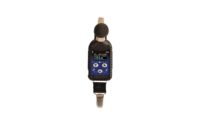Some basic highlights of the standard include:
If the germane, measured numbers are greater than 85 dbA, but do not exceed 90, the employer is not obligated to attempt to reduce the sound levels. However, any sensible employer would make such efforts. In any case, the required hearing conservation program encompasses quite a few specific elements. The key elements, per 1910.95, are monitoring, employee notification, audiometric testing (annual as well as baseline), hearing protectors (PPE), training and recordkeeping.
PPE - done right
There is a special distinction regarding PPE. If a company is cited for overexposure to the levels in table G-16 of the standard, and feasible administrative and engineering controls failed to reduce the exposure to a sufficient level, then the protection must be worn. If employees are "over 85 dbA, but not over 90," then a variety of protectors must, in most cases, merely be made available. They must be worn by employees who have not had the baseline audiogram or who have experienced a standard threshold shift. Whenever hearing protection is worn, it must suitably attenuate the noise, fit properly and be worn correctly.Employees should never simply be handed personal protective equipment. They must be trained in use, limitations, care, fit, storage and so on. Muffs, for example, that have become deformed or unsanitary shouldn't be used. Plugs must be inserted properly - read the container and literature. To insert a mass-produced plug into the right ear, for example, drape the left arm over the skull with the elbow pointing up, and use the left hand to pull the outer portion of the right ear gently outward and upward. Then roll and compress the clean plug between the thumb and index finger of the right hand to form a small, crease-free cylinder and gently insert the plug well into the ear canal. Holding the plug in place with your fingertip, give the plug time to properly expand in the canal before releasing the ear and the plug.
Other protection includes special plugs custom-molded to fit, ear bands on solid earmuff-type over-the-head frames, and multi-wing plugs on strings.
A note of caution: Do not allow employees to assume that wearing PPE will lessen their chances of hearing a fellow worker give instructions, shout a warning or call for help. In fact, due to the types of noise most effectively blocked by PPE, the probability of perceiving an employee's voice more readily than industrial noise will increase.
Checking noise levels
What should occur when, in the course of an OSHA inspection, the compliance officer has reason to believe that employees may be overexposed to noise? The officer should use a sound level meter to check the noise levels. Knowing the levels generated by machinery can help when considering noise abatement means. However, as to legal compliance, "sound level" really refers to the exposure to employees, not necessarily the noise generated at the source, such as a machine.
The compliance officer would then attempt to determine where employees are positioned relative to the noise and if the noise, at the time of the testing, is typical of the way it usually is. Is the decibel level higher at other times, when, for instance, more machines or other parts might be running? If the sound level meter readings, along with other key documentation, indicate that the "numbers" may "kick in" at least some portion of the noise standards, a dosimeter should be used to ascertain a more precise, cumulatively recorded and "percentaged" reading for individual employees over several hours.
Lessons learned
After following a logical noise evaluation strategy, you may conclude that there are no OSHA violations. Even so, valuable lessons may have been learned; it may be time to explore means to further control noise. Measures to consider include:
- changes in machinery and equipment;
- changes in material handling methods;
- installing machine enclosures;
- reducing vibration;
- damping with absorbents;
- sound-insulating separate rooms; and
- new or improved maintenance practices.
Be sure to include all affected employees in open discussions about "sound advice."
SIDEBAR: Hearing loss: You can't fix it later
To change employees' attitudes towards donning noise-attenuating PPE, you've got to teach them about the personal consequences of overexposure to noise. It's not enough to tell them it's "company rules" or scare them with the threat of OSHA enforcement. Tell them some hard facts:
- The cumulative effect of noise over several years is generally what leads to hearing loss.
- Very short exposure to extremely loud noise can cause permanent hearing loss.
- Destroyed inner ear cells cannot be replaced or repaired; the damage is irreparable.
- The ear loses its ability to recover from temporary hearing loss.
Or, you might want to put it to them this way: In time, they may not be able to discern the voice of their child, the words of a spouse, the harmony in a song or a fellow worker's warning of a falling load. Explain that hearing aids may make sounds louder to the listener but don't do much to repair distortion, and that noise can cause irritability, nervousness and fatigue. Hearing loss can result in the constriction of blood vessels and a quickened pulse rate, and can even relate to problems with digestion and sexual performance.
Maybe now they'll listen.
